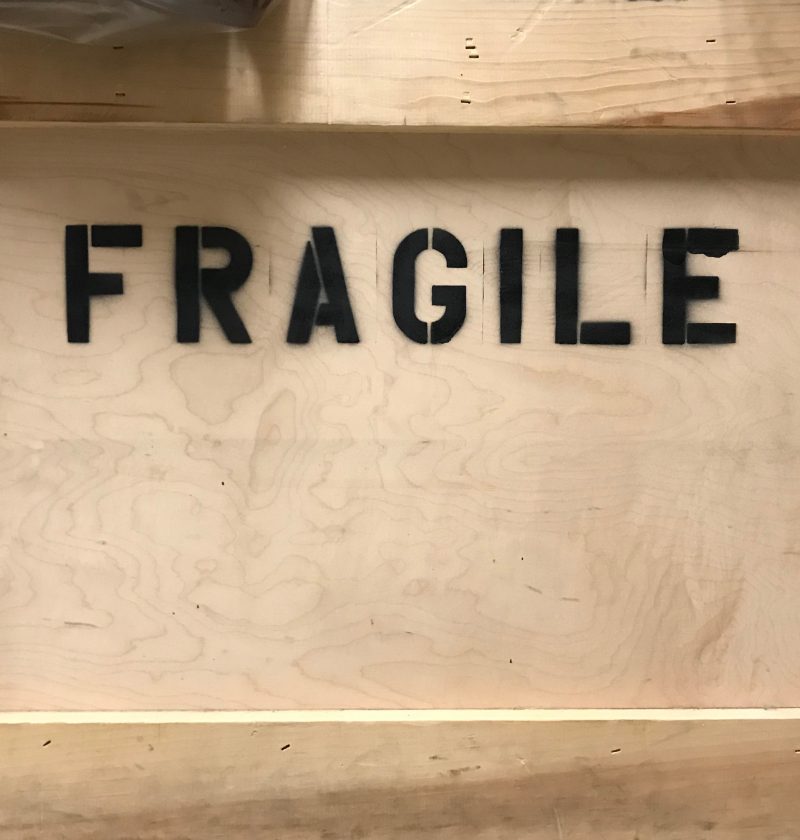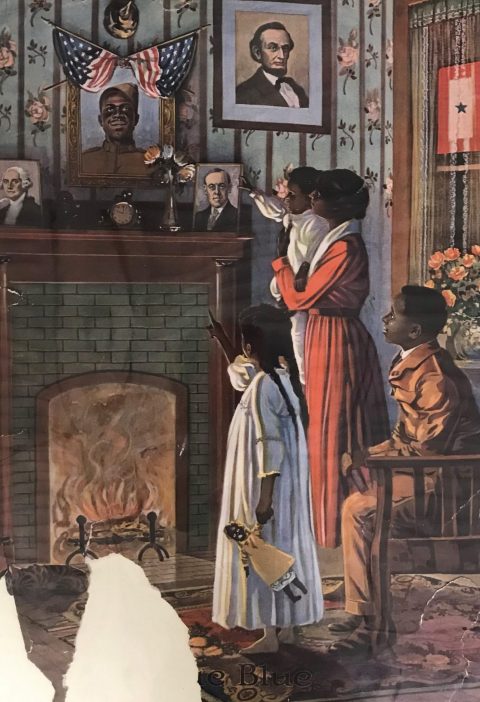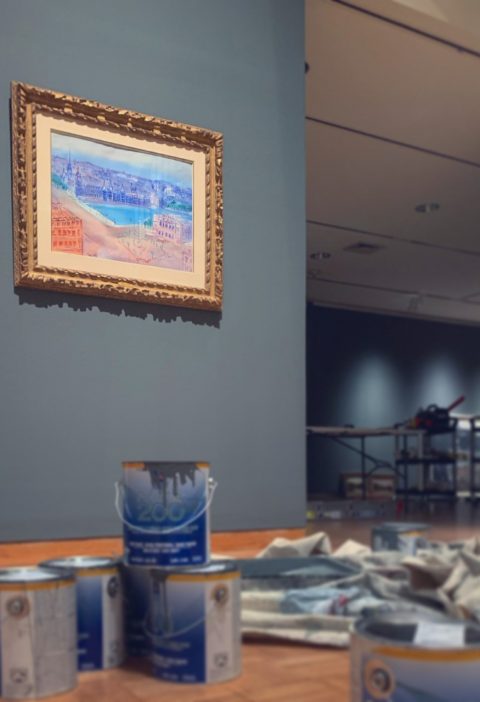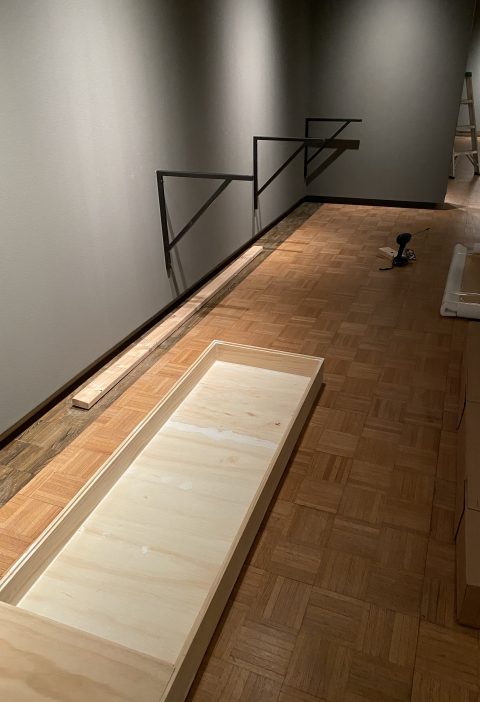How do you pack an ornate bronze sculpture or a large plaster frame for a trip across country on a truck? “Carefully” is the old joke. If you have ever been to my office you might have noticed an old packing crate sitting in the corner that has been repurposed as a table. The spray painted “Fragile” sign gives away its original purpose. That crate was home grown – we made it in our now mothballed carpentry shop. It was a good first attempt for a crate, with reusable bolts, a gasketed lid, and lined on the inside with archival foam. I was quietly proud of it and thought it would certainly qualify as a solid entry for the art shipping industry.
How wrong I was.
So here are some of my stories – the good, the bad, and the ugly of art packing from 20 years behind the scenes at the Trout.
The Good
A few years ago, our director pulled together an ambitious show of José Guadalupe Posada prints, almost all of which we could not traditionally matte and frame. These prints, many in newspaper-type formats, had to be suspended in Melinex sleeves (the topic of a future Tales from the Vault, just as a teaser) and could not travel vertically like standard framed works. I called in the professionals from one of our regular art shippers who have master crate builders on staff. After a quick conversation about dimensions and number of works in the show, and several weeks of construction, six large crates arrive at the Gallery. Built to carry the frames flat so that the prints wouldn’t shift, the crates were works of art – smooth wood, beveled edges, cleats on the bottom to allow for a lift jack, gaskets to seal out moisture, and butterfly clips to easily secure the lids. The interiors were lined with chemically inert, archival ethafoam, had spacers on the bottom to keep the art away from the wooden walls, and incorporated stacking foam trays custom cut to hold the frames. I loaded up the show and sent it out … and after two years on the road, the works came back without any damage and barely a shift in their mountings.
It was about as good as they come.

Professional crate builders assembling custom crates – notice how they shape the ethafoam to support the artworks and prevent them from moving. Photograph courtesy of Bonsai Fine Arts
The Bad
Early in my career at the Gallery, we brought in a ceramics exhibition that included many large and challenging pieces to install (another future Tales from the Vault, teaser #2). I hadn’t prepared many ceramics shows at that point and had only worked with one other 3-D crating job, which was decent though only included shoebox-sized objects. I wasn’t sure what to expect, but I assumed for a widely circulating exhibition, the packing job would be high end and well-designed.
Or not.
Several large crates carrying the show were delivered via an art shuttle, large enough to require several equally large men to move them into our holding area. The walls of the crates were beaten up and the lids were fastened with drywall screws (several holes without hardware as the repeated openings had worn out the wood). Inside was worse – ceramic pieces wedged into areas minimally protected by plank insulation boards, supports provided by chunks of fragmenting Styrofoam (NOT archival and extremely messy), and padding achieved by stuffing garbage bags filled with newspaper into open spaces. An exhibition worth more than a quarter of a million dollars packed like you were only allowed to use materials from your attic and basement.
I took pictures just to try to remember how it all went back together. In the end, I spent a little of our exhibition budget to repack the crates with at least some better material. It was a matter of conscience.
The Ugly
Contemporary mixed media shows always present challenges for shippers, but when you don’t use a professional art crating company … well, the results can be interesting, to say the least. When the exhibition arrived at the Gallery, my intern and I surveyed the variety of packages that sat before us. Some were reused crates, larger than they should have been for the works inside, but at least secure and protective. Others were cardboard boxes, cut open and wrapped loosely around paintings and prints, with sticky adhesive tape getting dangerously close to frames that were minimally wrapped in plastic sheeting. And a few came in appliance boxes, banana cartons from the grocery store, shoeboxes, and reusable groceries bags. Unpacking these pieces was difficult and repacking them in their housing was impossible (we ordered gallery bins and art shipping boxes for their return home).
It was the least professional packing job we had experienced at the Gallery … so why is this example not part of The Bad?
Because the show was organized by the artists, came to us without a loan fee, and included recently completed works that had been immediately sent out to capitalize on the show’s contemporary themes. It was a guerrilla-type packing job for an exhibition that was as much an essential social commentary as it was an opportunity to display art.
You had to respect the spirit behind the effort.
That’s all for now – stay tuned next week for another look inside the Vault.
-James Bowman




